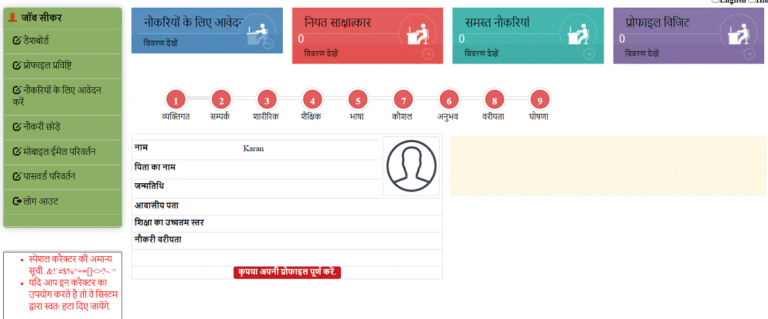Jila Sewayojan: A Comprehensive Guide to District-Level Employment Schemes, Impact, and Future Prospects
Introduction
Jila Sewayojan—literally translating to “district employment” in many South Asian languages—has emerged as a practical, decentralized approach to tackle unemployment and underemployment at the local level. Designed to marry national objectives with district realities, jila sewayojan places communities, local governments, and civil society at the center of job creation, skilling, and livelihood support. This long-form article examines jila sewayojan in depth: its history, core objectives, implementation mechanisms, state-level impacts, success stories, challenges, and future prospects. The analysis draws on policy logic and program design principles while keeping an eye on regional variations, women’s empowerment schemes, rural development outcomes, and social welfare initiatives.

Why district-level action matters
Nationwide programs can set targets, allocate budgets, and design frameworks. But employment happens locally—at markets, farms, factories, and service centers. Jila sewayojan recognizes that districts differ in industrial composition, skill gaps, demographic pressures, and infrastructure. By letting districts plan, prioritize, and implement, the scheme aligns resources with real-time needs. For communities, jila sewayojan reduces mismatch between labor supply and demand, focuses on local value chains, and enhances social inclusion through targeted measures for vulnerable groups.
Historical background and policy context
The concept behind jila sewayojan can be traced to long-standing decentralization debates and the recognition that employment policy must be place-based. Historically, employment interventions were predominantly top-down—massive national schemes focused on public works, large-scale retraining, or incentive-driven industrial policies. Over time, policy makers and development practitioners learned that outcomes improve when local governments have autonomy and technical support to design programs reflecting district-specific strengths and constraints.
In many countries, this gave rise to district employment cells, local labour-market information systems, and municipally-led livelihood programs. Jila sewayojan formalizes this approach: a policy framework that bundles skilling, job placement, entrepreneurship support, and social protection into a coherent district-led model. It interfaces with national initiatives—backward linkages for funding and standards, forward linkages for placement and sectoral pipelines—while keeping district priorities front and center.
Core objectives of jila sewayojan
At its heart, jila sewayojan pursues five core objectives:
-
Local job creation: Generate sustainable employment through district-led projects, MSME stimulation, and demand-led skilling.
-
Skill matching: Bridge the gap between available skills and employer needs using localized training programs and industry clusters.
-
Inclusive access: Prioritize women, youth, persons with disabilities, and marginalized communities to ensure equitable benefits.
-
Rural upliftment: Strengthen rural livelihoods through agro-based enterprises, value-chain integration, and micro-enterprise support.
-
Institutional capacity building: Empower district administrations and local stakeholders with data, digital tools, and program management skills.
When these objectives are achieved in combination, jila sewayojan not only reduces unemployment but also increases labor productivity, formalizes informal work, and strengthens social welfare nets.
Institutional architecture and governance
Successful jila sewayojan relies on a clear institutional framework with roles at national, state, and district levels. Typical architecture includes:
-
National/central nodal agency: Provides broad policy guidance, funds, technical standards for training, and outcomes monitoring.
-
State coordination unit: Adapts national guidelines to regional realities, channels funds, and monitors state-level performance indicators.
-
District implementation cell (the jila sewayojan cell): The operational hub—responsible for local surveys, employer outreach, skilling programs, and placements.
-
Local advisory boards: Composed of industry representatives, civil society, panchayat/municipality officials, and beneficiaries to ensure accountability and relevance.
-
Third-party partners: Training providers, NGOs, microfinance institutions, and private placement agencies that execute elements of the program.
This governance mix ensures the strengths of central standards and local adaptability—critical for jila sewayojan’s credibility and impact.
Designing interventions: a menu for districts
Jila sewayojan offers a flexible menu of interventions which districts can mix and match:
-
Demand-led skilling: Short, industry-aligned courses with certification and employer guarantees.
-
Public works and local infrastructure: Time-bound projects that provide wages to vulnerable households while improving public assets.
-
Microenterprise incubation: Seed grants, loan facilitation, and mentoring for small businesses—particularly women-led enterprises.
-
Placement and job fairs: District job portals, employer mapping, and recurrent placement drives.
-
Sectoral value-chain support: For districts with strengths in textiles, agro-processing, handicrafts, or services.
-
Social protection linkages: Integration with pensions, food security, and unemployment assistance so that vulnerable seekers are protected while they train or look for work.
By deploying a combination of these, jila sewayojan adapts to local comparative advantages and seasonal labor patterns.
Financing and incentives
Financing jila sewayojan typically blends central and state grants, district budgets, corporate social responsibility funds, and leveraged private finance. Incentive structures matter: performance-based transfers encourage districts to meet placement targets; tax incentives or wage subsidies can nudge employers to hire locally trained workers; and matched funding for women entrepreneurship ensures local buy-in. A clear, predictable flow of funds keeps jila sewayojan cells operational and responsive.
Data, monitoring, and digital tools
Evidence-driven implementation is a pillar of effective jila sewayojan. District labor market information systems (LMIS) collect vacancy data, skill profiles, and placement outcomes. Digital portals register jobseekers, map employers, and track training attendance and certification. Real-time dashboards allow district managers to course-correct. When jila sewayojan integrates with national IDs, apprenticeship registries, and skills certificates, portability and recognition of training improve, accelerating transitions from training to employment.
State-level impact: variations, patterns, and lessons
Jila sewayojan’s impact varies across states due to industrial structure, administrative capacity, and political commitment. Consider typical patterns:
-
Industrialized districts: Districts with manufacturing clusters often use jila sewayojan to build apprenticeship programs and align curricula with factory requirements. Here, jila sewayojan improves placement rates quickly.
-
Agrarian districts: In predominantly rural districts, jila sewayojan focuses on agro-processing, storage, cold chains, and off-season employment through rural public works. The scheme reduces seasonal distress migration.
-
Service-oriented districts: Urban service hubs prioritize skilling in IT, hospitality, retail, and gig economy services—jila sewayojan fosters linkages to local employers and online platforms.
Cross-cutting lessons: districts that invest early in employer partnerships, vocational trainers, and digital LMIS see better outcomes. States that support capacity-building for district teams amplify jila sewayojan’s effectiveness.
Women’s empowerment and gender-responsive design
An effective jila sewayojan places women at the center. Gender-responsive elements include:
-
Targeted outreach: Special drives to register women jobseekers, flexible training hours, and childcare facilities during training.
-
Sectoral targeting: Encouraging women into non-traditional sectors (e.g., digital services, agro-machinery) and supporting traditional female-dominated crafts with market linkages.
-
Entrepreneurship support: Microgrants, group-based enterprises, and convergence with self-help group programs to expand women-led income activities.
-
Safety and transport: Addressing commuting barriers through local placement, safe transport stipends, and workplace safety protocols.
When jila sewayojan actively removes barriers, women’s labor force participation improves and household incomes stabilize.
Rural development and livelihood diversification
Rural districts benefit significantly when jila sewayojan emphasizes diversification. Rather than relying solely on agriculture, district plans incentivize agro-enterprises, rural tourism, renewable energy installation, and artisanal value-addition. Jila sewayojan’s linkage to microfinance, technical assistance, and local markets helps small producers scale. As livelihoods diversify, rural incomes become less dependent on seasonal harvests and more resilient to shocks.
Success stories and illustrative case studies
Real-world examples bring jila sewayojan to life. While the mechanics vary, common success factors emerge: strong district leadership, committed employers, responsive skilling providers, and meaningful participation from local communities.
-
Case study A — Cluster revitalization: In a district known for handloom weaving, jila sewayojan partnered with local cooperatives to modernize looms, provide design training, and link artisans to e-commerce platforms. Result: higher earnings, reduced migration, and renewed interest among youth.
-
Case study B — Youth placement hub: A peri-urban district created a one-stop placement hub under jila sewayojan, integrating soft-skills training, internships with local firms, and a digital job portal. Result: improved placement rates and employer satisfaction.
-
Case study C — Women-led enterprise groups: In a tribal district, women’s self-help groups were trained in food processing and linked to local schools and hospitals as suppliers. Jila sewayojan’s micro-grants and market facilitation increased household incomes and social capital.
These narratives show how district adaptations of the jila sewayojan model can be transformative.
Challenges and implementation bottlenecks
Despite promise, jila sewayojan faces real-world obstacles:
-
Capacity gaps: Many district administrations lack skilled staff for labor-market analysis, training oversight, and employer engagement.
-
Funding unpredictability: Irregular disbursements from higher levels stall operations and erode trust.
-
Quality of training: Short-duration courses without employer input can produce certificates with low market value.
-
Private sector engagement: Small and medium enterprises often remain unconvinced about investing time in locally trained candidates.
-
Data weaknesses: Without accurate LMIS data, programs target the wrong skills or over-produce candidates in saturated fields.
-
Inclusion gaps: Reaching remote communities, women, and persons with disabilities requires deliberate outreach and resources.
Addressing these challenges is essential for scaling jila sewayojan beyond pilot success.
Comparing jila sewayojan with national and international schemes
Jila sewayojan is distinct but complementary to large-scale national programs. Where national schemes provide funds, standards, and macro-level incentives, jila sewayojan is the execution engine at the local level. Internationally, similar place-based models exist—e.g., European local employment initiatives, Latin American municipal programs, and African district livelihood schemes. Compared to centralized models, jila sewayojan tends to be more agile and better at matching local supply and demand. The effective approach is often hybrid: national frameworks for portability and quality, local autonomy for relevance.
Monitoring, evaluation, and metrics of success
Robust metrics are crucial. Key performance indicators for jila sewayojan include:
-
Placement rate: Percentage of trained candidates who secure jobs within a set period.
-
Sustained employment: Proportion remaining employed for six months or more.
-
Earnings uplift: Change in average monthly income post-intervention.
-
Enterprise survival rate: Percentage of supported microenterprises still operating after one or two years.
-
Inclusion indicators: Shares of women, youth, and marginalized groups among beneficiaries.
-
Employer satisfaction: Feedback from firms that hire trainees.
Third-party evaluations and impact assessments provide credibility and reveal scalable design elements.
Role of technology and digital innovation
Digital tools amplify jila sewayojan’s reach and efficiency:
-
Digital job portals: Match jobseekers with vacancies, host profiles, and provide automated notifications.
-
E-learning modules: Supplement classroom training and allow blended learning.
-
Mobile-based certifications: Portable proofs of skill that employers can verify.
-
Analytics dashboards: Help district managers identify demand trends and measure outcomes.
-
Payment systems: Direct benefit transfers and wage payments reduce leakage and improve accountability.
When districts invest in user-friendly digital platforms, transaction costs drop and transparency rises—key for sustained trust.
Partnerships: private sector, NGOs, and academia
Jila sewayojan thrives on partnerships. Employers inform curricula, NGOs handle outreach in vulnerable communities, and academic institutions provide technical expertise. Corporates support apprenticeships and market access while microfinance organizations enable scaling of microenterprises. Well-structured partnerships with clear roles, KPIs, and feedback loops turn jila sewayojan from an idea into measurable livelihoods.
Policy coherence and convergence with social welfare initiatives
Jila sewayojan succeeds when it does not operate in isolation. Convergence with social welfare initiatives—public distribution, child benefits, housing programs—ensures that vulnerable families are supported holistically. For instance, a household receiving unemployment support through social welfare while a family member participates in a jila sewayojan skilling program is more likely to complete training and accept apprenticeship roles. Cross-departmental coordination and single-window services increase program efficacy.
Financing innovations and sustainability
Beyond grants, sustainability for jila sewayojan can come from innovative financing: social impact bonds, municipal development funds, employer-led training funds, and revolving microloan schemes. Revenues from district-level enterprises—such as value-added processing units—can be partly reinvested in ongoing skilling. Ensuring a financial plan that blends public funding with local revenue streams reduces vulnerability to fiscal shocks.
Policy recommendations and design principles
To maximize jila sewayojan’s impact, policymakers should consider:
-
Capacity-building at the district level: Invest in hiring and training program managers, data analysts, and employer-relations officers.
-
Employer-centric curricula: Design training with inputs and commitments from local employers, including internship placements.
-
Performance-based funding: Use outcome-linked grants to incentivize placements and durable employment.
-
Gender and inclusion mainstreaming: Allocate targeted resources for women, disabled persons, and remote communities, including transport stipends and childcare during training.
-
Robust LMIS: Deploy district-level labor market information systems for demand-driven planning.
-
Monitoring and evaluation frameworks: Commission independent evaluations and use evidence to iterate quickly.
-
Financial diversification: Create mechanisms for local revenue generation and private financing to ensure continuity.
These principles help jila sewayojan remain adaptive, accountable, and results-oriented.
Future prospects: scaling and sustainability
Jila sewayojan’s future depends on political will, institutional investment, and demonstrable results. Scaling requires standardization where useful (e.g., certification), while preserving district flexibility. As economies evolve—with gig work, digital services, and green jobs rising—jila sewayojan must keep pace through continuous curriculum updates and employer partnerships. Successful districts can evolve into regional learning hubs that mentor neighboring districts, creating a virtuous cycle of capacity building.
Measuring long-term social returns
Beyond immediate placements, the social returns include reduced poverty, improved health outcomes (through higher household spending), lower crime rates, and stronger civic participation. Long-term evaluations should look at intergenerational impacts: do children of jila sewayojan beneficiaries attain better education and employment prospects? These broader metrics validate the program’s social-investment rationale.
Comparative advantage: why jila sewayojan can outperform centralized interventions
Jila sewayojan’s competitive edge lies in locality: speed of response to shocks, better matching of skills, and stronger community ownership. While centralized programs can scale money and standards, they often miss local nuances. District-level initiatives are flexible enough to pilot innovations—such as blended learning modules for seasonal workers—and scale successful pilots faster within the district.
Risks and mitigation strategies
Potential risks include capture by local elites, political interference in beneficiary selection, and fragmentation of efforts across districts. Mitigation tactics involve transparent beneficiary registries, community oversight committees, grievance redressal mechanisms, and independent audits. Technology (e.g., public dashboards) can expose outcomes and deter manipulation.
Integrating climate resilience and green skills
As climate risks intensify, jila sewayojan should incorporate green skills: solar installation, sustainable agriculture, water-harvesting construction, and eco-tourism. Districts prone to climate shocks can use employment schemes to build resilient infrastructure while training locals for green jobs. This convergence enhances both livelihoods and environmental outcomes.
Building employer trust: incentives and quality assurance
Long-term employer engagement requires trust that jila sewayojan produces work-ready candidates. Quality assurance measures—accreditation for training providers, competency-based assessments, and probationary internships—help. Incentives such as temporary wage subsidies or tax breaks for firms hiring local trainees can kick-start partnerships.
Communication and community mobilization
For jila sewayojan to reach those who need it most, district teams must invest in grassroots outreach: village meetings, radio announcements, and collaboration with local leaders. Clear messaging about eligibility, benefits, and processes reduces misinformation and increases uptake—especially among marginalized groups.
Conclusion
Jila sewayojan represents a pragmatic, localized approach to one of the most persistent public policy challenges—employment. By leveraging district knowledge, engaging employers, and focusing on inclusion, jila sewayojan can unlock substantial social and economic gains. The pathway to success requires capacity-building, data-driven planning, financial sustainability, and strong community engagement. With thoughtful design and persistent learning, jila sewayojan can be a cornerstone for resilient local economies, women’s empowerment, and rural revitalization.
Frequently Asked Questions
What is jila sewayojan and how does it differ from national employment schemes?
Jila sewayojan is a district-level employment initiative that emphasizes local planning, skilling, and placement. Unlike centralized schemes, it gives districts autonomy to design programs according to local industry, labor supply, and socioeconomic conditions, while still aligning with national standards and funding support.
How does jila sewayojan support women and marginalized groups?
The scheme incorporates targeted outreach, flexible training schedules, childcare support during training, micro-grants for women-led enterprises, and specific quotas or incentives to ensure women, youth, and marginalized communities are prioritized in skilling and placement drives.
What financing models make jila sewayojan sustainable?
Sustainability can come from a mix of central and state grants, district budget allocations, employer contributions, CSR funds, impact investments, and revolving microloan schemes. Performance-based funding and local revenue-generating activities also contribute to long-term sustainability.
How do districts measure success under jila sewayojan?
Key metrics include placement rates, sustained employment over six months or more, earnings uplift, enterprise survival rates, inclusion indicators (share of women and vulnerable groups), and employer satisfaction scores. Independent evaluations and real-time dashboards aid measurement.
Can jila sewayojan help reduce rural-to-urban migration?
Yes—by diversifying rural livelihoods through agro-processing, village-level microenterprises, and off-season employment opportunities, jila sewayojan reduces the pressure to migrate. When local income options improve, households are less likely to send members to cities.
What role does technology play in jila sewayojan?
Technology enables digital job portals, mobile-based certification, labor market analytics, e-learning, and direct payments. These digital tools improve matching, transparency, and scalability of district interventions.
How can private firms collaborate with jila sewayojan?
Private firms can contribute by co-designing curricula, offering apprenticeships and internships, hiring trained candidates, and investing in local training centers. Incentives like wage subsidies and tax benefits can catalyze deeper partnerships.






